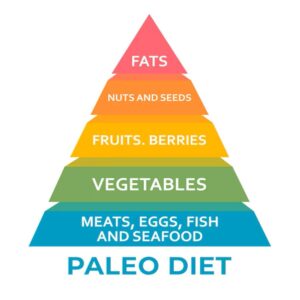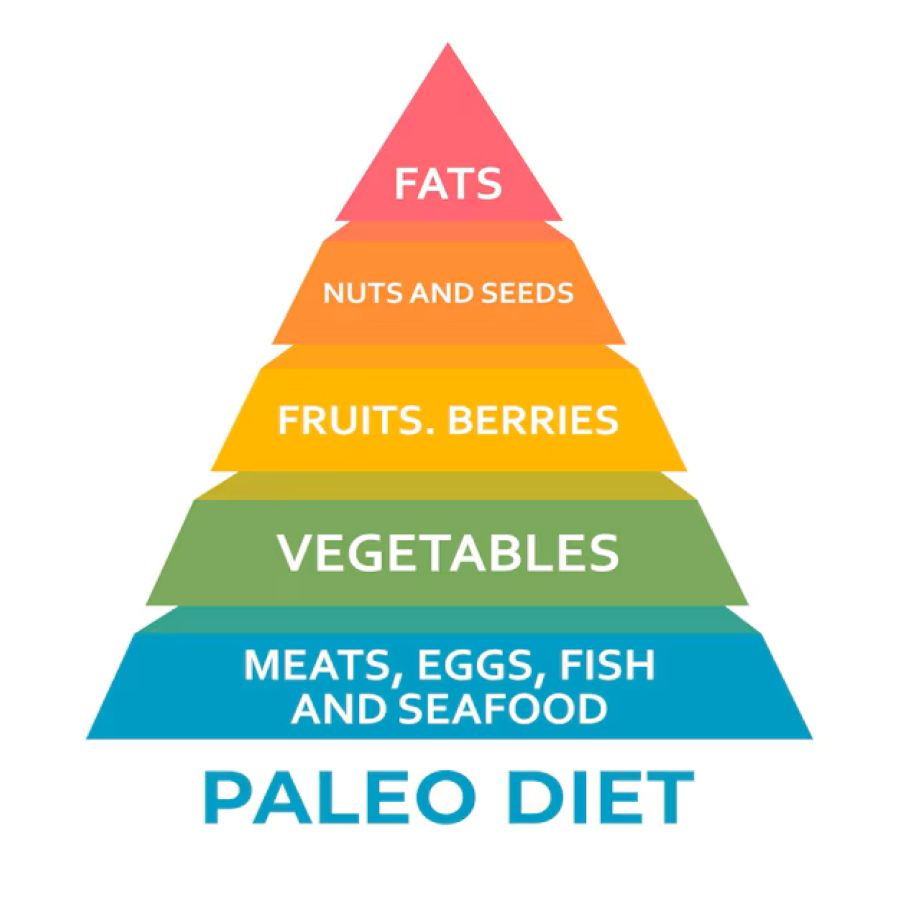The paleo diet has become increasingly popular in recent years. The diet is based on the idea that humans are genetically pre-disposed to eating a specific set of foods, and that modern hybridized versions of these foods are not healthy for us. The paleo diet is a return to our caveman roots, cutting out processed foods and grains while eating more fruits and veggies, fish, poultry, and red meats. The principle behind the Paleo Diet is simple: eat like a caveman. That means lots of lean protein (ideally from grass-fed animals), non-starchy vegetables, fruit, nuts and seeds. These foods are high in vitamins, minerals and antioxidants – all things that the human body needs but cannot synthesize naturally. If you’re interested in learning more about the Paleo Diet or want to begin following it yourself here is some important information:

History and Philosophy of the Paleo Diet
The Paleo Diet, often referred to as the caveman diet, has its roots deeply embedded in the Paleolithic era, which dates back approximately 2.5 million to 10,000 years ago. This period was marked by the lifestyle of hunter-gatherers, long before the advent of agriculture and processed foods. The philosophy behind the Paleo Diet is predicated on the notion that our bodies are genetically programmed to eat like our Paleolithic ancestors. This means consuming foods that are whole, unprocessed, and essentially what could be hunted or gathered—meat, fish, nuts, seeds, fruits, and vegetables.
The concept gained significant traction in the late 20th century, thanks in part to gastroenterologist Walter L. Voegtlin’s book published in 1975, which suggested that mimicking the diet of Paleolithic hunters and gatherers could improve a person’s health. Since then, numerous studies, books, and advocates have contributed to refining the diet’s principles and promoting its benefits. The philosophy is not just about choosing certain types of food over others; it’s about a broader lifestyle that encourages physical activity and getting in touch with nature, much like our ancestors.
The Paleo Diet challenges the conventional dietary guidelines and the modern food industry by rejecting grains, legumes, and dairy—foods that became staples only after the development of agriculture. Proponents argue that the human body hasn’t evolved to process these types of food efficiently, leading to widespread health issues like obesity, diabetes, and heart disease. Instead, the diet emphasizes eating a variety of fresh, whole foods to mimic the nutritional environment our bodies evolved to thrive in.
How the Paleo Diet Works
At its core, the Paleo Diet is straightforward: if your Paleolithic ancestors didn’t eat it, neither should you. This means the diet is rich in foods that can be hunted, fished, or gathered such as lean meats, fish, fruits, vegetables, nuts, and seeds. It excludes foods that result from farming or food processing like grains, legumes, dairy products, refined sugar, and salt. The rationale is that by eating the foods our bodies are adapted to digest, people can achieve better health and a lower risk of chronic diseases.
This dietary approach focuses on the quality of the foods consumed. It encourages eating grass-fed, pasture-raised meats and organic, locally sourced fruits and vegetables. This not only supports better health through more nutritious foods but also promotes sustainable farming practices. By cutting out processed foods, the diet naturally reduces intake of added sugars and unhealthy fats, which are linked to various health issues.
The Paleo Diet also impacts how the body metabolizes foods, emphasizing foods with a low glycemic index to stabilize blood sugar levels. This can lead to improved energy levels and prevent the spikes and crashes often associated with high carbohydrate and sugar intake. Furthermore, by focusing on nutrient-dense foods, the diet can lead to natural weight loss and improved muscle mass due to higher protein intake.
Pros of the Paleo Diet
One of the most significant advantages of the Paleo Diet is its focus on whole, unprocessed foods, which can lead to an overall healthier lifestyle. By eliminating processed foods, refined sugars, and grains, individuals often experience weight loss, improved metabolic health, and reduced inflammation. This is particularly beneficial for those suffering from lifestyle diseases such as obesity, type 2 diabetes, and cardiovascular disease.
Another benefit is the emphasis on high-quality protein and healthy fats, which can lead to better satiety and reduced cravings. Protein-rich diets have been shown to support muscle strength, bone health, and weight loss. Healthy fats, particularly those from fish, nuts, and seeds, provide essential fatty acids and fat-soluble vitamins crucial for brain health and reducing inflammation.
The diet’s simplicity is also a plus. It doesn’t require counting calories or strict meal timing, making it easier to follow than some other dietary plans. Its emphasis on fruits and vegetables increases fiber intake, which is essential for digestive health and can help prevent various diseases. Moreover, many people report enhanced energy levels and better physical performance once they adjust to the diet.
Cons of the Paleo Diet
Despite its benefits, the Paleo Diet has several drawbacks. One of the main criticisms is the exclusion of whole grains and legumes, which are part of the recommended dietary guidelines due to their high fiber, vitamin, and mineral content. This exclusion can lead to potential nutritional deficiencies, especially in calcium and vitamin D, crucial for bone health.
The diet can also be challenging to maintain long-term due to its restrictive nature and the modern lifestyle that often relies on quick, processed foods for convenience. Eating out or finding Paleo-compliant foods can be difficult, potentially leading to a sense of social isolation or frustration for individuals trying to adhere to the diet strictly.
Additionally, the cost of following the Paleo Diet can be higher than a diet that includes grains and legumes, mainly if one opts for organic produce and grass-fed meats. This can make the diet less accessible to a broader range of individuals, particularly those on a tight budget.
Nutritional Aspects of the Paleo Diet
The Paleo Diet is rich in vitamins, minerals, and antioxidants due to its heavy emphasis on fruits, vegetables, nuts, and seeds. These foods are essential for maintaining a healthy immune system, reducing inflammation, and protecting against chronic diseases. The diet’s high protein content is beneficial for muscle repair and growth, making it popular among athletes and those looking to improve their physical fitness.
However, the lack of dairy, grains, and legumes can lead to deficiencies in calcium, vitamin D, and certain B vitamins. It’s important for individuals following the Paleo Diet to find alternative sources for these nutrients, such as leafy greens for calcium and fortified foods or supplements for vitamin D.
The diet’s focus on lean meats and healthy fats promotes heart health by reducing cholesterol and triglyceride levels. However, it’s essential to balance the intake of various types of fats, as too much saturated fat from certain meats can increase the risk of heart disease.
Common Misconceptions about the Paleo Diet
One common misconception about the Paleo Diet is that it’s all about consuming large quantities of meat. In reality, the diet emphasizes a balance of lean proteins, healthy fats, and a variety of fruits and vegetables, mirroring the diverse diet of Paleolithic humans. Another misunderstanding is that the Paleo Diet is incompatible with a vegetarian lifestyle. While more challenging, it’s possible to follow a Paleo-vegetarian diet by focusing on eggs, nuts, seeds, fruits, and vegetables.
Some people also mistakenly believe that the Paleo Diet is a low-carb diet. While it does reduce the intake of carbs by eliminating grains and processed sugars, it includes carbohydrate sources like fruits and vegetables, providing the body with energy and essential nutrients.
Who Should Consider the Paleo Diet?
The Paleo Diet can be a good option for individuals looking to improve their overall health, lose weight, or manage chronic diseases such as diabetes and heart disease. It’s also popular among athletes and fitness enthusiasts for its emphasis on protein and healthy fats, which support muscle repair and energy.
However, it may not be suitable for everyone. Individuals with specific dietary needs or health conditions should consult with a healthcare provider before making significant dietary changes. Those who have difficulty accessing or affording high-quality meats and organic produce may find the diet challenging to follow.
Tips for Successfully Following the Paleo Diet
Successfully following the Paleo Diet requires planning and preparation. Start by purging your pantry of processed foods and stocking up on Paleo-friendly options like fruits, vegetables, nuts, and lean meats. Planning meals ahead of time can help prevent the temptation to revert to convenience foods.
Experiment with new recipes and foods to keep the diet interesting and enjoyable. Many resources and communities are available online for support and inspiration. Additionally, allowing for occasional flexibility in the diet can make it more sustainable long-term, preventing burnout and frustration.
Is the Paleo Diet Right for You?
The Paleo Diet offers a return to a simpler, more natural way of eating that can lead to significant health benefits. However, it’s not without its challenges and potential downsides. Individuals considering the Paleo Diet should weigh the pros and cons and consider their personal health goals and lifestyle before making a decision.
Ultimately, the best diet is one that is balanced, sustainable, and tailored to an individual’s specific needs. Consulting with a healthcare provider or a nutritionist can provide valuable guidance in determining if the Paleo Diet is the right choice for you.

